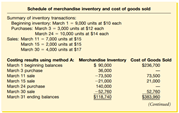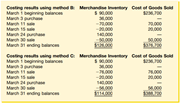dolution.
The following data are from a completely randomized design.
|
Treatment |
|
A |
B |
C |
|
164 |
146 |
124 |
|
142 |
156 |
122 |
|
168 |
129 |
134 |
|
145 |
146 |
145 |
|
149 |
135 |
151 |
|
176 |
154 |
128 |
| Sample mean |
157.3 |
144.3 |
134 |
| Sample variance |
192.668 |
111.468 |
138 |
Compute the sum of squares between treatments.
Compute the mean square between treatments.
Compute the sum of squares due to error.
Compute the mean square due to error (to 1 decimal).
Set up the ANOVA table for this problem.
| Source of Variation |
Sum of Squares |
Degrees of Freedom |
Mean Square |
F |
| Treatments |
? |
? |
? |
? |
| Error |
? |
? |
? |
|
| Total |
? |
? |
|
|
At the = .05 level of significance, test whether the means for the three treatments are equal.
Calculate the value of the test statistic (to 2 decimals).
—————————————————————————————————————————————————-
In a completely randomized design, 12 experimental units were used for the first treatment, 15 for the second treatment, and 20 for the third treatment. Complete the following analysis of variance (to 2 decimals, if necessary).
| Source of Variation |
Sum of Squares |
Degrees of Freedom |
Mean Square |
F |
| Treatments |
1,300 |
? |
? |
? |
| Error |
? |
? |
? |
|
| Total |
1,900 |
? |
|
|
—————————————————————————————————————————————————-
Three different methods for assembling a product were proposed by an industrial engineer. To investigate the number of units assembled correctly with each method, 30 employees were randomly selected and randomly assigned to the three proposed methods in such a way that each method was used by 10 workers. The number of units assembled correctly was recorded, and the analysis of variance procedure was applied to the resulting data set. The following results were obtained: SST = 10,830; SSTR = 4,570.
Set up the ANOVA table for this problem (to 2 decimals, if necessary).
| Source of Variation |
Sum of Squares |
Degrees of Freedom |
Mean Square |
F |
| Treatments |
? |
? |
? |
? |
| Error |
? |
? |
? |
|
| Total |
? |
? |
|
|
Use = .05 to test for any significant difference in the means for the three assembly methods.
Calculate the value of the test statistic (to 2 decimals).
The p-value is
What is your conclusion?
—————————————————————————————————————————————————-
To study the effect of temperature on yield in a chemical process, five batches were produced at each of three temperature levels. The results follow.
|
Temperature
|
|
50°C |
60°C |
70°C |
|
|
31 |
27 |
24 |
|
|
21 |
28 |
29 |
|
|
33 |
31 |
29 |
|
|
36 |
20 |
31 |
|
|
29 |
24 |
32 |
|
Construct an analysis of variance table (to 2 decimals, if necessary).
| Source of Variation |
Sum of Squares |
Degrees of Freedom |
Mean Square |
F |
| Treatments |
? |
? |
? |
? |
| Error |
? |
? |
? |
|
| Total |
? |
? |
|
|
Use a .05 level of significance to test whether the temperature level has an effect on the mean yield of the process.
Calculate the value of the test statistic (to 2 decimals).
The p-value is
What is your conclusion?



